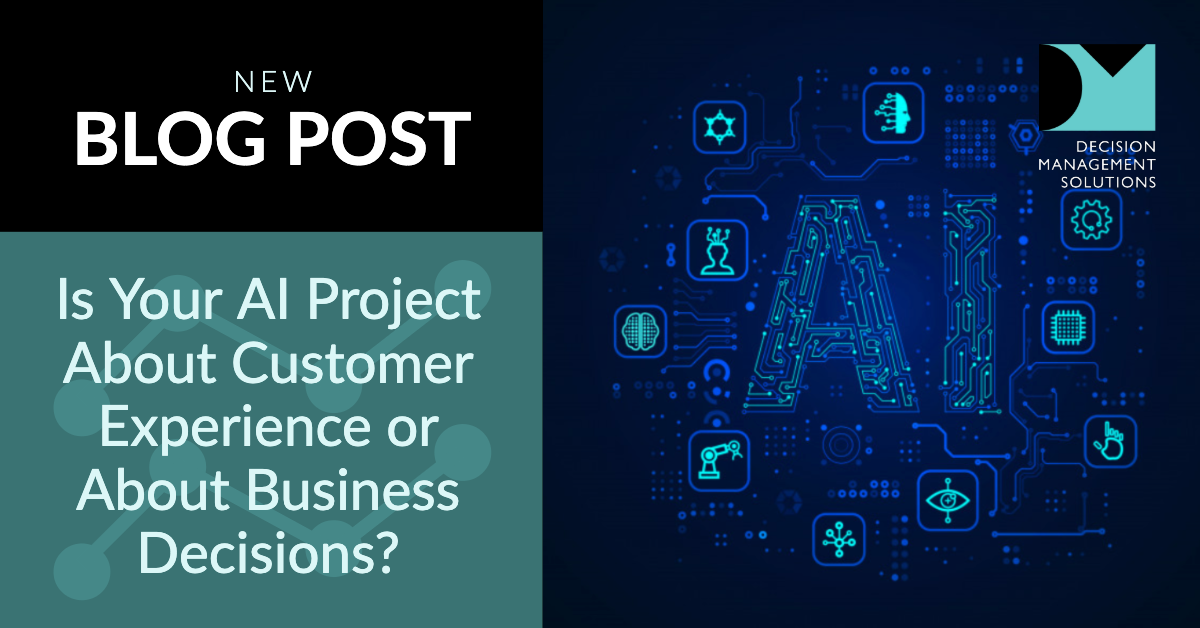Many organizations are investing in artificial intelligence (AI) initiatives these days. However, many are also lumping all of the uses of AI into the same program. This is a terrible idea because AI technologies are being used for two very different business outcomes. AI success relies on a clear focus on business outcomes rather than on the technology itself.
So, is your AI project about how you interact with customers (business outcome #1) or about improving business decisions (outcome #2)?
In the first bucket are technologies like natural language processing (to allow chatbots and speech interfaces), image recognition (to allow customers to submit images to your systems not just to your people) and robotic process automation (RPA) (to stitch your old systems together so customers don’t have to wait while someone manually copies data from one to the other). None of these improve your decision-making, they focus instead on the customer or user experience. These should be part of your user/customer experience programs.
In the second bucket are machine learning and AI algorithms used to predict risk, identify fraud, target waste, predict lifetime value or determine propensities to buy. These algorithms are the next generation of analytics, adding to the insights gained from data mining and predictive analytics by applying new algorithms, more automation and larger data volumes to come up with better predictions. This means you can lean on these predictions more heavily, use them where you might not have been able to before or just improve results by replacing old algorithms with new ones.
This second kind of AI should be integrated with the rest of your analytic efforts and should follow the same kind of decision-centric or DecisionsFirst™ approach we recommend for advanced analytics. Thinking first about the business decision you want to improve is critical. Mixing these new AI and machine learning (ML) approaches with business rules let’s you add the guiderails, constraints, policies and regulations that turn your predictions into useful actions. And focusing on continuous improvement lets you turn this machine learning into business learning.
In short, don’t lump all of your AI together into one technology-centric program – make sure you are clear if you are focusing on customer/user experience or decision-making. And put your AI efforts into the right context to succeed.
I recently recorded a podcast with Peter Schooff of Data Decisioning on this topic. Check out the transcript or the podcast.
